It was bright and sunny as I walked into the Square. The columns were like a last grove of trees before walking into the beauty of a hidden meadow. Except this was no hidden meadow, but perhaps the most imposing Church in Christendom.
The water danced in the fountains like diamonds in the sunlight. Everything was almost surreal. As I walked to the door, people all over trying take it in, as much as they could with artistic, cultural, historical overload. Italy does that to people.
They walked around with one earbud in, the other dangling loosely under the chin as the guide rattled off endless names and dates. One hand was on the camera shutter and the other pointing at some distant landmark. But the funniest expression was the face, eyes kind of unfocused but not quited crossed or glazed, the head at a tilt, and the tongue all but lolling out.
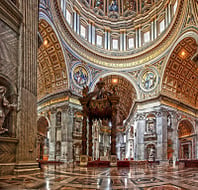 Then as I was my way up the steps, through the door, and into St. Peter's Basilica, I was "wowed" by the splendors and riches of over 500 years of art! Michelangelo, Rafael, Borromini, Cortona, and others - I picked my jaw off the floor.
Then as I was my way up the steps, through the door, and into St. Peter's Basilica, I was "wowed" by the splendors and riches of over 500 years of art! Michelangelo, Rafael, Borromini, Cortona, and others - I picked my jaw off the floor.
Amazing, right?! No!
Something went wrong - rewind. The incredible works of art fade from view, and in fact that's not what really matters! All those statues commemorate men and women that lived and often died for their faith. All the marble expresses the variety, beauty, and complicity of our earthly reality compared with the sublime simplicity and elegance of heaven.
Back out the door by the same people. But that's not the point either. However amazed they might be, this isn't a museum. The facade isn't the exhibit A. St. Peter isn't a photo shoot. It's a Church where one encounters the divine.
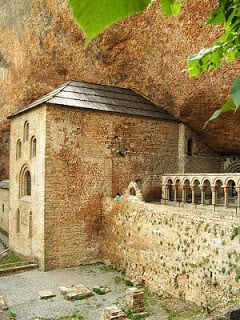 Finally right where we began at the fountain in the Square. But no, even these we got wrong. Originally there was only one fountain in the middle of the square, and it wasn't for artistic value. It was practical. PILGRIMS got off their horses, out of their carts, or more likely tugged off mud-caked boots, and washed up.
Finally right where we began at the fountain in the Square. But no, even these we got wrong. Originally there was only one fountain in the middle of the square, and it wasn't for artistic value. It was practical. PILGRIMS got off their horses, out of their carts, or more likely tugged off mud-caked boots, and washed up.
Over the course of history, Christian pilgrims have gone to countless destinations - Rome, Jerusalem, Spain and the "Camino de Santiago", Lourdes, and Fatima are just a few!
But what's the difference between our tourists and pilgrims, sight-seeing and journeying, a landmark and a shrine?
A definition that I found includes four things - (1) a journey, (2) whose motivation should be religious (3) to overcome some hardship and (4) reach a sacred destination.
1. Journey
There something special about going somewhere else. We interrupt our daily routine and undertake a path. Often we don't know exactly where it leads. We know where we are, where we are going at least nominally, and have some idea of how to get there.
2. Religious motivation
We don't go on a pilgrimage to take pictures, buy T-Shirts, have new experiences of food, or anything else. We go to forge a new and deeper connection with the supernatural, with someone, with God, with Jesus Christ.
3. Sacrifice
So we don't live at the time of Chaucer and the Canterbury Tales. Planes, trains, and cars have been invented, and we don't have to pretend they haven't. But there's something about leaving beside our comfort zone. Not only going a new physical place, but reaching a new place in ourselves, one that requires discipline and some loving sacrifice.
4. Sacred destination
Exactly, no pilgrimage to the Baseball Hall of Fame, Elvis and Graceland, or any other such place. Our destination must be linked to the supernatural, linked to God, often because that's where he burst into space and time.
For us Christians, it is really amazing to see how real our religion is. We don't sit in the lotus position, meditate on the void - we can go places and see, hear, touch, and taste our faith.
But all of these characteristics just go to show that although we go on pilgrimage, in reality our life IS a pilgrimage. We, humans, are pilgrims by nature.
A pilgrimage evokes the believer's personal journey in the footsteps of the Redeemer…the pilgrim progresses along the path of Christian perfection, striving to attain, with the support of God's grace, “the state of the perfect man, to the measure of the full maturity of Christ” (Eph 4:13).
John Paul II, Incarnationis Mysterium, 7
So whether it be going to Rome or just continuing or daily pilgrimage - what are we going to do? Are we on a journey? Do we set out anew each day to new and unseen places? Maybe it just means doing something we don't normally do - helping less privileged in a shelter, nursing home, or just sharing God with those that don't know him.
What's our motivation? Why are we going on that European tour? Or simply why do we get up in the morning? Maybe it is simply making every action a sing of our love for God and neighbor. He doesn't always call us to exceptional things, but to do them with exceptional love and care.
"Sacrifice", I know it's not a popular word. Most of us are not called to make the sacrifice of walking (swimming in most cases) to Rome. Most won't be called to die like the martyrs on the pilgrimage of life either - crucified, skinned alive, boiled in oil, hung, drawn, and quartered.
But all of us are called to say that encouraging word, offer a smile even when we're down, to get up those five minutes earlier and say a prayer, or whatever makes the difference.
Finally where are we going? We're all on a journey to find ultimate happiness and fulfillment - that means God. We're on our way to heaven, and what step will we take today?
What's your favorite pilgrimage experience? Please post or send me a note through email, FaceBook, Twitter, or on the page.
Copyright 2012 Br. Mark Thelen, L.C.
About the Author

Guest
We welcome guest contributors who graciously volunteer their writing for our readers. Please support our guest writers by visiting their sites, purchasing their work, and leaving comments to thank them for sharing their gifts here on CatholicMom.com. To inquire about serving as a guest contributor, contact editor@CatholicMom.com.

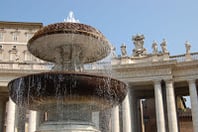
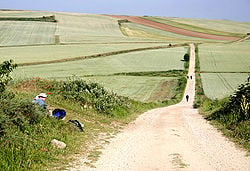
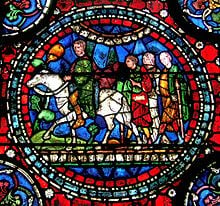

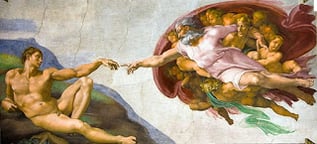

.png?width=1806&height=731&name=CatholicMom_hcfm_logo1_pos_871c_2728c%20(002).png)
Comments